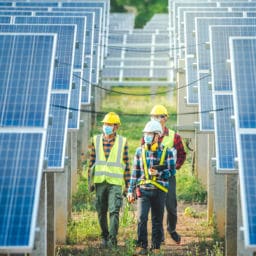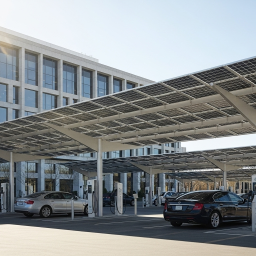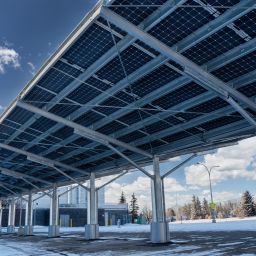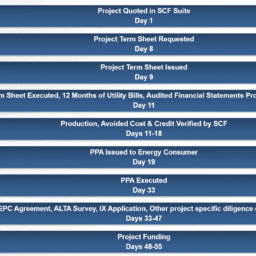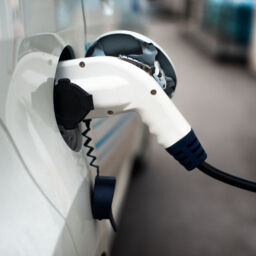 The path to decarbonization of the U.S. economy is long, and while we have made great strides, there is still work to be done. The good news is that the path to reducing our carbon emissions is relatively clear on some fronts. If you take the top three carbon-emitting sectors, they total 58% of the U.S. carbon footprint. Here is a list of the percentages by sector:
The path to decarbonization of the U.S. economy is long, and while we have made great strides, there is still work to be done. The good news is that the path to reducing our carbon emissions is relatively clear on some fronts. If you take the top three carbon-emitting sectors, they total 58% of the U.S. carbon footprint. Here is a list of the percentages by sector:
- Industrial use (making things): 24.2%
- Energy use in buildings – Residential and Commercial: 17.5%
- Transportation: 16.2%
Within the first two sectors, the majority of energy used is electrical. The U.S. has used a combination of wind and solar to dramatically reduce our carbon footprint in these two massively carbon-emitting markets. However, the transportation sector has been a much more challenging sector to decarbonize. How does the U.S. (and the rest of the World) offset the carbon emissions from burning liquid fuels?
Liquid fuels are a more complex challenge to offset because fossil fuels, like gasoline, are so energy-dense and easy to transport within vehicles due to that density. Batteries have come a long way but still have density, weight, and life cycle issues. That is finally changing as companies like Tesla and BYD have dramatically ramped up production and increased their R&D budgets. New batteries are denser, meaning that they are relatively lighter and have improved cycle lives.
 The proof is in the number of electric vehicles that have either been released or are soon to be released into the market. In 2011, six major car manufacturers were responsible for all electric vehicle production. Today, that number has expanded to over 20, and they are seen everywhere. Electric vehicles still only make up 2.5% of national auto sales (as of 2019), but that number is expected to grow to 20%+ by 2030. The shift to electric automobiles is happening and will only accelerate in the coming years as the range challenge is solved using improved battery technology, and the costs continue to decline with the volume curve. There is definitely hope that we can solve the carbon emissions problem on the consumer side of the equation.
The proof is in the number of electric vehicles that have either been released or are soon to be released into the market. In 2011, six major car manufacturers were responsible for all electric vehicle production. Today, that number has expanded to over 20, and they are seen everywhere. Electric vehicles still only make up 2.5% of national auto sales (as of 2019), but that number is expected to grow to 20%+ by 2030. The shift to electric automobiles is happening and will only accelerate in the coming years as the range challenge is solved using improved battery technology, and the costs continue to decline with the volume curve. There is definitely hope that we can solve the carbon emissions problem on the consumer side of the equation.
The much bigger and more difficult transport problem lies with commercial transport. Larger transport vehicles that carry heavy loads require vastly more energy than consumer vehicles. This is why vehicle manufacturers have chosen to tackle this portion of the market last, but it is finally beginning to happen. Companies like Tesla, Daimler, Volvo, BYD, and other smaller start-ups are all putting out early versions of tractor-trailers and last-mile transport vehicles. The downside is that none of these are currently close to volume production and will require years to get into the mass manufacturing stage.
That is not slowing the demand, however, for these vehicles. Here is a shortlist of some of the major transport companies and the public commitments they have made to going electric within their vehicle fleets:
- Amazon – has committed to purchasing 100,000 electric delivery vehicles and has stated they will be carbon neutral by 2040
- Walmart – has stated that all of their delivery vehicles will be electric by 2040
- UPS – recently placed an order for 10,000 electric delivery vans
- Fed-Ex – Placed an order for 1,000 electric delivery vans
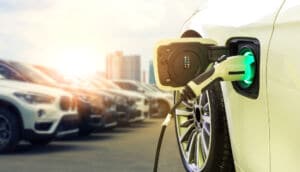 The other considerable challenge to overcome for the commercial electric vehicle market is a considerably lacking grid. A typical electric tractor-trailer requires 400-600 kWh of storage capacity. If you had a fleet of 50-100 trucks operating out of a distribution center, you would need at least 10-20 MW of charging capacity and probably considerably more depending on how quickly the trucks need to be loaded and turned around at the facility. Suppose the transportation market was to adopt electric vehicles in masse, which appears to be where they are headed. In this case, utilities will have to begin upgrading transmission lines and sub-stations to handle the additional load. This issue will apply not only to the commercial transport market but also to consumer transport companies like Uber and Lyft. Both companies have plans to electrify their fleets in the next 10-20 years.
The other considerable challenge to overcome for the commercial electric vehicle market is a considerably lacking grid. A typical electric tractor-trailer requires 400-600 kWh of storage capacity. If you had a fleet of 50-100 trucks operating out of a distribution center, you would need at least 10-20 MW of charging capacity and probably considerably more depending on how quickly the trucks need to be loaded and turned around at the facility. Suppose the transportation market was to adopt electric vehicles in masse, which appears to be where they are headed. In this case, utilities will have to begin upgrading transmission lines and sub-stations to handle the additional load. This issue will apply not only to the commercial transport market but also to consumer transport companies like Uber and Lyft. Both companies have plans to electrify their fleets in the next 10-20 years.
One way to mitigate the effects of adding these new substantial loads to the grid is by co-locating renewable assets like solar, wind, and storage at these sites, as they often own large tracts of land near their facilities. These assets create more certainty about future energy costs and can shorten the time frame to energize these new fleets. Keep an eye on this space because the market is about to see a dramatic uptick in growth.




